Mastering Culinary Techniques for Flavor and Artistry
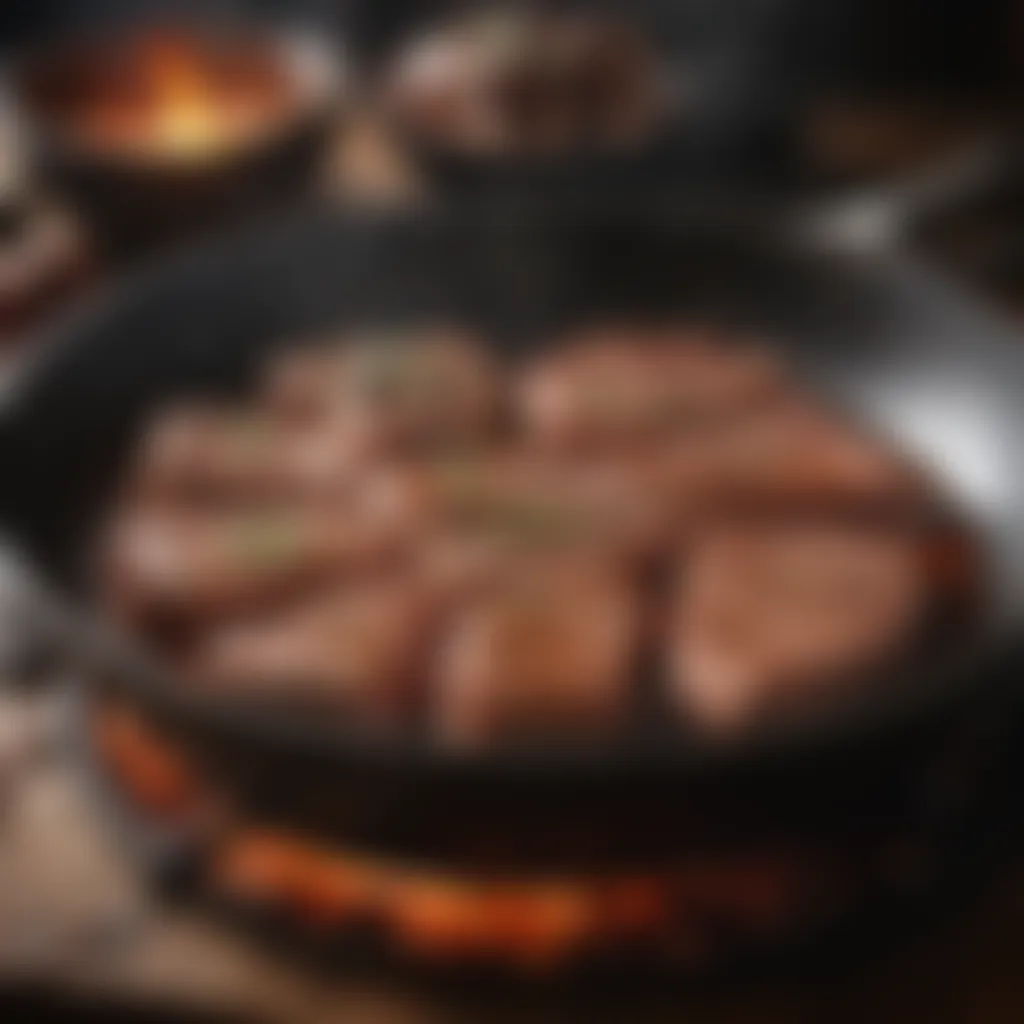
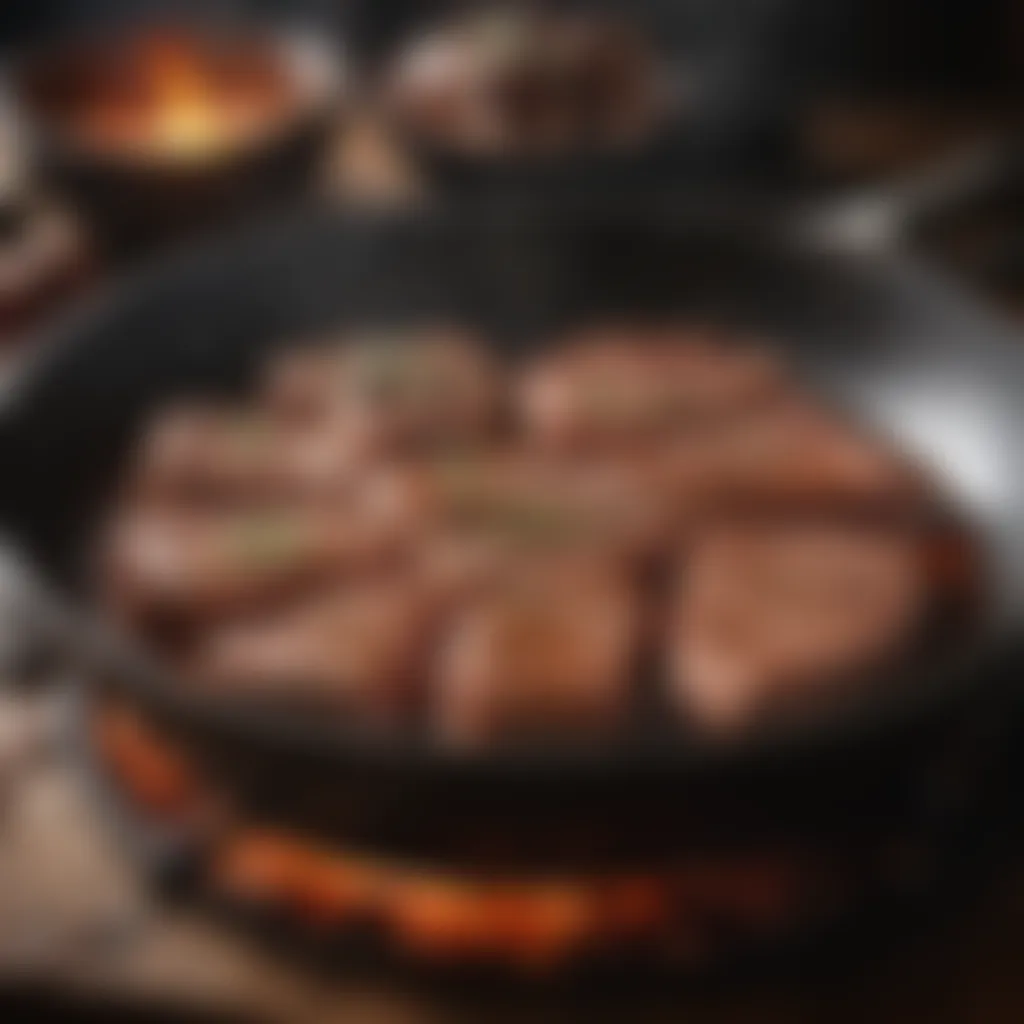
Intro
Cooking is both an art and a science, a delicate balance of ingredients and techniques that come together to create a symphony of flavors and experiences. In this guide, we will navigate through a range of culinary techniques, from classic to contemporary, underlining the intricacies that lead to the successful transformation of raw ingredients into gourmet masterpieces. It's not just about following a recipe; it's about understanding the why and how behind each step in the cooking process. This knowledge empowers you to experiment, improvise, and ultimately, elevate your culinary prowess.
As we reach into our pantry, you may find that cooking is a journey, where each phase—from prep work to presentation—offers a chance to explore the textures, tastes, and aromas that tantalize the senses. Whether you're a home cook or an aspiring chef, understanding these techniques can deepen your appreciation for the culinary arts while enhancing your skills in the kitchen. Let's dive deeper, starting with the basics.
Ingredients:
Creating a delicious dish begins with gathering the right ingredients. Here’s a standard list of components you might need:
- 2 cups of all-purpose flour
- 1 teaspoon of salt
- 1 cup of water (room temperature)
- 1 tablespoon of olive oil
- 1 teaspoon of sugar
- 1 packet of active dry yeast (about 2.25 teaspoons)
Having quality ingredients is the foundation for any culinary success. Opt for fresh produce and spices as they significantly influence the overall depth of flavor in your dishes.
Preparation Steps:
- Activate the Yeast:
- Mix Dry Ingredients:
- Combine Mixtures:
- Knead the Dough:
- First Rise:
- In a small bowl, combine the warm water with the sugar and sprinkle the yeast on top. Allow it to sit for about 5–10 minutes until it's frothy. This step proves your yeast is alive and well.
- In a large mixing bowl, whisk together the flour and salt. Ensure they are well incorporated, as this helps to distribute the salt evenly throughout the dough.
- Once the yeast is active, stir in the olive oil, then add this mixture to the flour mixture. Use a wooden spoon or your hands to form a dough.
- Transfer the dough onto a lightly floured surface and knead for about 8–10 minutes until it's smooth and elastic. You should be able to stretch it without it tearing.
- Form the dough into a ball, place it in a greased bowl, cover it with a damp cloth, and let it rise in a warm area until it doubles in size, usually about 1 hour.
Technical Aspects:
- Temperature Setting:
- Timing:
- Critical Techniques:
- Ensure that the water used for activating the yeast is warm but not hot; about 110°F (43°C) is optimal. If it’s too hot, it can kill the yeast.
- Time is crucial. Pay attention to how long the dough rests and rises; following these recommendations closely ensures successful fermentation and flavor development.
- Kneading properly is vital for gluten development. A well-kneaded dough will result in a better texture and crumb in the finished product.
Cooking Process:
- Preheat the Oven:
- Shape the Dough:
- Second Rise:
- Bake:
- Cool:
- While the dough rises, preheat your oven to 425°F (220°C).
- Once the dough has risen, punch it down gently to release the air bubbles, then shape it as desired—whether forming loaves, rolls, or pizza base.
- Allow the shaped dough to rise again for about 30 minutes. This is essential for softer textures.
- Place the dough in the oven and bake for 20–30 minutes or until golden brown. The internal temperature should be around 190°F (88°C) for bread.
- Let the baked product cool on a wire rack for at least 15 minutes before cutting. This helps maintain its structure and prevents it from becoming gummy.
Troubleshooting Tips:
- If your dough didn't rise, it may have been due to either old yeast or water that was too hot or too cold. Always check your ingredients first.
- If the texture is too dense, it could also be a result of over-kneading. Each dough can be slightly different, so adjust your techniques based on feel.
Remember, cooking is an exploration. Enjoying the results is just as important as the process itself. As you develop your skills, don’t hesitate to dabble with ingredients and techniques that inspire you.
The joy of cooking comes from not just the food on your plate, but the love and effort that goes into making it.
Intro to Culinary Techniques
Culinary techniques form the backbone of cooking, illuminating the path from basic meal preparation to gourmet artistry. This section explores the significance of these techniques, not just for the seasoned chef but for anyone looking to elevate their home cooking. Mastering different culinary techniques is akin to learning the rules of grammar before writing prose; they provide the structure upon which creativity can flourish.
In this guide, we’ll discuss various cooking methods and their applications, ensuring a thorough understanding that meets the diverse needs of readers, especially those balancing family meals with culinary aspirations. The beauty of these techniques lies in their adaptability and legacy, transforming simple raw ingredients into noteworthy dishes.
Defining Culinary Techniques
Culinary techniques encompass a broad spectrum of methods used in the preparation, cooking, and presentation of food. Think of them as the tools in a chef's toolbox. Each technique has its own purpose and application, serving to enhance texture, flavor, and appearance.
Some key culinary techniques include:
- Sautéing: Cooking food quickly in a small amount of fat, often resulting in a deliciously caramelized exterior while retaining moisture within.
- Baking: A method involving dry heat, usually in an oven, that converts raw ingredients into an array of sweet or savory baked goods.
- Braising: Combining slow cooking and moisture, this technique tenderizes tough cuts of meat while intensifying flavors.
Understanding these definitions allows cooks to apply the right technique for the right dish, ultimately affecting the outcome on the plate. It’s not always about just following a recipe; it’s about recognizing why a certain method is used and how it interacts with ingredients to boost flavor and presentation.
The Historical Context of Cooking Methods
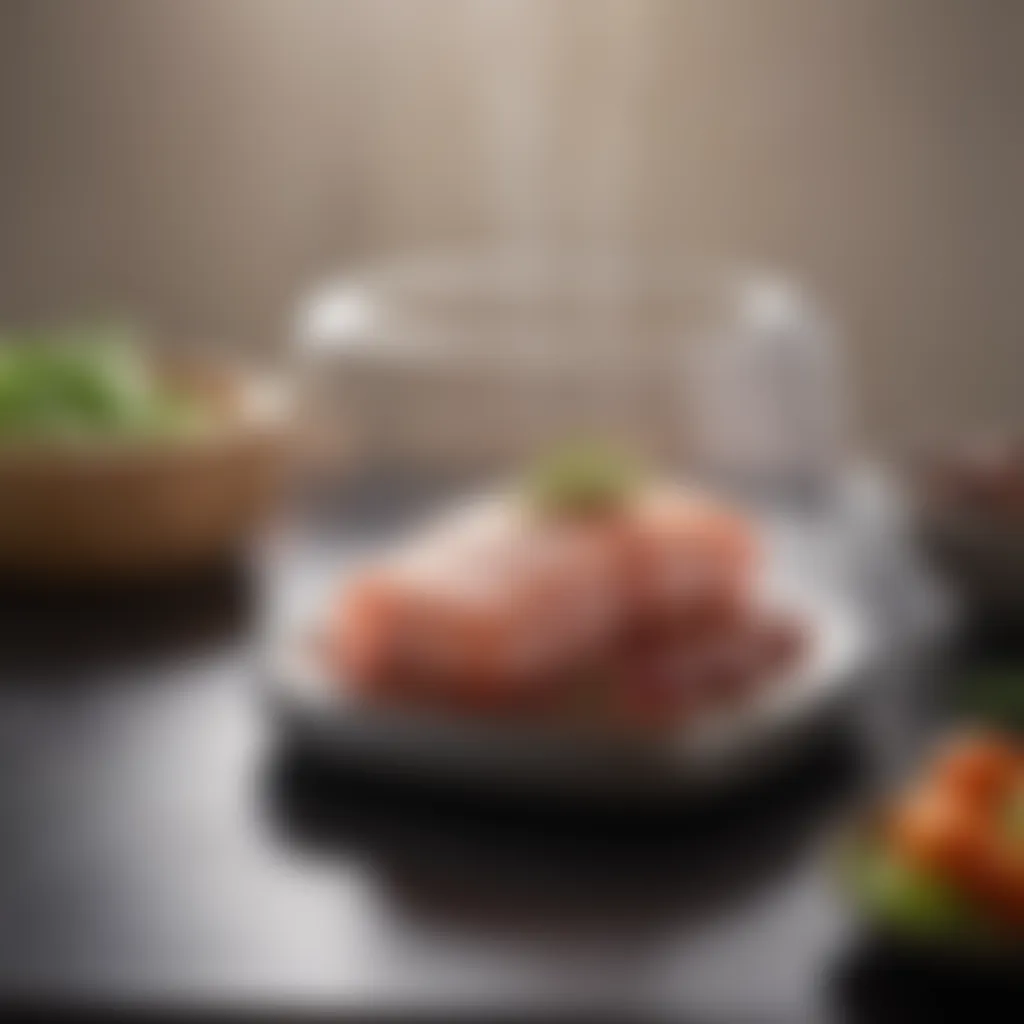
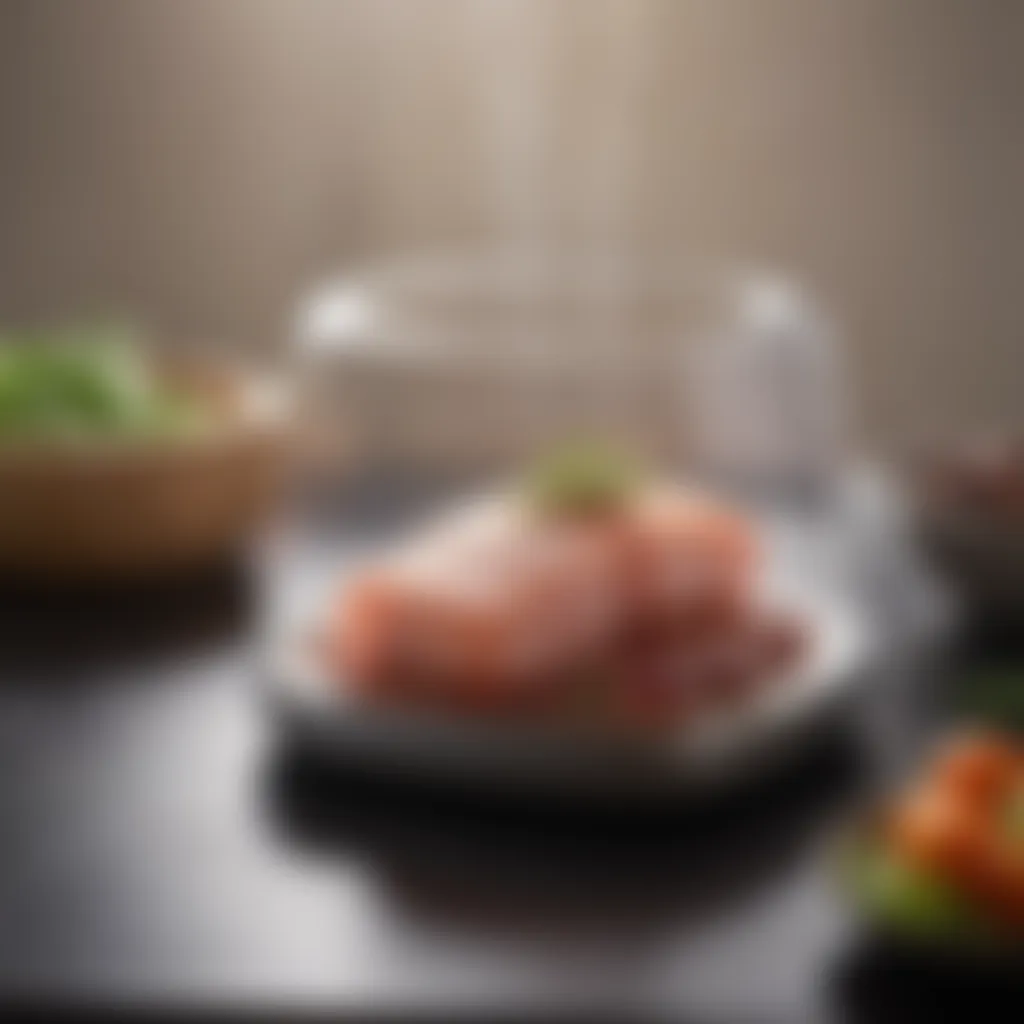
The evolution of cooking methods tells a story that reflects cultural shifts and technological advancements throughout history. From ancient times, when food was cooked over open flames, to the modern kitchen equipped with electric ovens and sous vide machines, culinary techniques have been drastically transformed.
In many cultures, methods were often restricted by available resources. For instance:
- Asian Cuisines: In countries like China and Japan, stir-frying and steaming took center stage due to the need for quick cooking methods that retained the crunch and vibrancy of fresh vegetables.
- European Traditions: In contrast, European cooking historically favored roasting and baking, reflecting not only a preference for hearty meals but also available tools like brick ovens.
This blend of history and technique has influenced global cuisine, giving rise to regional specialties and diverse flavors. When tackling diverse culinary styles today, it’s fruitful to appreciate their historical roots and the societal contexts that shaped them.
"Cooking is like love. It should be entered into with abandon or not at all." - Harriet Van Horne
In essence, culinary techniques are not simply methods; they are the language of the kitchen, speaking to tradition, culture, and innovation. They invite cooks to not only follow in the footprints of chefs past but to carve their own paths using time-honored wisdom alongside modern ingenuity.
Fundamental Cooking Techniques
Understanding fundamental cooking techniques is like having a sturdy backbone in the realm of culinary arts. These techniques serve not just as methods but as the building blocks for various cuisines across the globe. They bring balance to your cooking; without them, one could easily feel lost in a sea of recipes and meals. Each technique has its own nuances, growing from cultural traditions and historical practices, which makes them even more fascinating.
Being well-versed in these techniques will elevate your culinary skills, enabling you to execute dishes with precision and confidence. Whether you’re a novice trying to get your feet wet or an experienced cook honing your craft, mastering these foundational skills is crucial for creating delightful meals.
Boiling and Simmering
Boiling and simmering are two primary methods of cooking food in water or broth. These techniques are often looked at as straightforward, but they hold more significance than meets the eye. Boiling is typically done at a higher temperature, causing bubbles to rise to the surface rapidly. This method is great for pasta or potatoes, where cooking them quickly is essential. Simmering, on the other hand, occurs at a lower temperature and is gentler on delicate ingredients like fish or certain vegetables. It not only helps to extract flavors but also keeps the food moist without breaking it apart.
Roasting and Baking
Roasting and baking, while similar, have distinct influences on the final outcome of dishes. Roasting involves cooking food, usually meat or vegetables, in an oven, while baking typically refers to the process of preparing breads, pastries, and other flour-based items. Mastery of these techniques can lead to a delightful textural experiences and rich flavors.
Choosing the Right Oven
Choosing the right oven is pivotal in ensuring successful roasting and baking outcomes. A convection oven is popular because it circulates hot air, cooking food evenly and often quicker than traditional methods. For those serious about baking, a brick oven might be the dream, providing excellent heat retention and a unique flavor. Each type of oven has its specific purpose and quirks, making it essential to know your options.
Temperature Control
Temperature control is another key element in roasting and baking. Precision is vital; even minor deviations can lead to significant changes in results. A temperature too high can lead to burnt outsides with raw insides, especially in cakes and breads, while too low might leave meats chewy and undercooked. This makes investing in an oven thermometer a wise choice, as it helps maintain accuracy in cooking temperatures for all your dishes.
Types of Baked Goods
When it comes to types of baked goods, understanding the differences greatly alters how one approaches baking. From crusty artisanal loaves to delicate soufflés and sturdy biscuits, the methods vary greatly for each. For instance, yeast breads require proofing time to allow for fermentation, enhancing flavor and texture. In contrast, a quick bread, using baking powder, can be ready in no time. Each type of baked good provides its advantages and challenges, offering culinary exploration that can keep cooking exciting.
Sautéing and Stir-Frying
Sautéing and stir-frying are high-heat cooking methods characterized by the rapid movement of food in a pan. The trick is to have ready-to-go ingredients, as everything happens in the blink of an eye. Ingredients are generally cut into equal sizes to promote even cooking, often allowing you to preserve unique flavors, colors, and textures. A healthy choice, these methods allow vegetables to retain their nutrients while providing a beautiful presentation.
Grilling and Broiling
Both grilling and broiling produce similar results through the direct application of high heat. Grilling involves cooking food over an open flame or heat source, leaving distinct char marks that elevate the visual and textural aspects of a dish. Broiling, however, takes place inside the oven, with heat applied from above. This difference in method allows for experimentation such as adding marinades or spices to enhance flavors.
Overall, diving into these fundamental techniques will lay the groundwork for a successful cooking journey. It opens doorways to a multitude of recipes and cultural expressions that make culinary arts not only a necessity but an adventure in flavors.
Advanced Techniques
Advanced culinary techniques elevate the act of cooking from mere food preparation to an art form. They introduce new methods and approaches that transform ingredients into extraordinary dishes that surprise and delight the palate. Understanding these techniques is pivotal for anyone wishing to broaden their culinary repertoire. They empower cooks to harness flavors and textures in innovative ways, ensuring that every dish tells a story.
Sous Vide Cooking
Sous vide cooking is often regarded as a game changer in the culinary world. This technique involves vacuum-sealing food in a bag and cooking it to precise temperatures in a water bath. The precision of temperature control sets sous vide apart, allowing for perfect doneness and enhanced flavors.
Equipment Needed
To engage in sous vide, specific tools are required that differ from traditional cooking methods. Fundamental items include:
- Immersion Circulator: This device heats the water to a precise temperature and circulates it for even cooking. It's a staple in achieving the accuracy that sous vide demands.
- Vacuum Sealer: This helps in sealing food in airtight bags, preventing moisture loss and ensuring even cooking.
- Containers: Water baths can be run in large pots or dedicated containers that fit comfortably in the kitchen.
The precision of the immersion circulator is particularly noteworthy since it eliminates guesswork in cooking times. One might regard this equipment as a worthwhile investment for dedicated home cooks or serious foodies. Yet, it does come with a downside; the equipment cost can be prohibitive for casual home cooks.
Advantages of Sous Vide
One significant advantage of sous vide is its ability to develop flavors that traditional methods may not achieve. By cooking food at lower temperatures over extended periods, proteins become tender without the risk of overcooking. The result is a dish that boasts a depth of flavor and texture rarely seen in standard cooking practices.
Moreover, this technique allows for a higher level of food safety when applied correctly, as cooking foods to the right temperature prevents harmful bacteria from thriving. Another attractive trait is the hands-off nature of sous vide; once the food is sealed and in the water bath, the cook can focus on other meal preparations. However, the downside includes the time investment as some foods can take hours to cook, which might not suit everyone’s busy lifestyles.
Fermentation and Pickling
Fermentation and pickling represent fascinating advanced techniques that have been around for centuries. These methods not only enhance flavors but also preserve food, making them essential in kitchens worldwide. They facilitate a greater understanding of flavors and introduce unique textures, appealing to even the most discerning palate.
Microbial Transformation
At the heart of fermentation is microbial transformation. This process involves using bacteria, yeast, or molds to alter the chemical makeup of foods. The key characteristic of this technique lies in the live cultures that introduce beneficial bacteria into the gut, supporting digestive health.
By using the right microbes, classic foods such as yogurt or sauerkraut are transformed into something greater than their original ingredients. The advantage of incorporating microbial transformation in cooking is profound; it elevates flavors and prolongs shelf life while simultaneously adding nutritional value. Yet, a disadvantage might be the learning curve in understanding the fermentation process, as improper conditions or timings can lead to undesirable results.


Common Fermented Foods
Common fermented foods, such as kimchi, miso, and kefir, offer a vivid landscape of flavors and health benefits. These foods are not only delightful on their own but also versatile in cooking. For instance, kimchi can be used as an ingredient in stews or served as a side dish.
One of the unique features of fermented foods is their dynamic nature; they continue to change flavor even after they're prepared. The evolving taste profile makes them an exciting addition to countless recipes. Nevertheless, while embracing these foods, one caution should be noted—certain fermented products can cause strong flavors that might not appeal to everyone, making them somewhat polarizing among diners.
Plating and Presentation Techniques
Plating and presentation are often the unsung heroes of the culinary world. While the taste and aroma of a dish can steal the show, the visual aspect packs a potent punch that greatly enhances the overall dining experience. Properly plated dishes can elevate a meal from humble home-cooking to the heights of fine dining. It is not mere decoration; it is about communicating the essence of the dish and arousing anticipation before the first bite.
Consider the interplay of color, texture, and composition as the trifecta for effective presentation. Each of these elements contributes uniquely and significantly, transforming a plate of food into a feast for the eyes. The mind processes visual cues before they reach the palate; thus, how a dish is presented can directly influence the diner’s perception and enjoyment.
"The first bite is with the eyes"—this popular saying underscores the importance of how food is served.
The Art of Plating
Color and Texture
When it comes to color and texture, these elements are not just aesthetic choices; they are pivotal in enhancing appetite and enjoyment. Bright colors—think rich reds, vibrant greens, and sunny yellows—draw attention and excite the senses. Each shade can evoke different emotional responses; for example, greens may suggest freshness and health, while reds can incite warmth and comfort.
Furthermore, varied textures create a contrast that captivates textures of dishes, from smooth sauces to crunchy toppings. This contrast keeps the palate engaged, making each bite an adventure. When using color and texture in plating, consider the balance. Too many bold colors can overwhelm, while a muted palette might bore the plate. Thus, finding harmony is key; it’s about allowing each aspect to shine without overshadowing another.
The unique feature of using color and texture lies in the psychology of dining—it creates an expectation that the dish will also taste as appealing as it looks. This characteristic is both an advantage and a delicate balancing act in plating.
Plate Composition
Plate composition is where the magic really happens. It involves the arrangement of food elements in a way that guides the eye and satisfies the presentation principle. Consider the plate as a canvas; the manner in which components are placed will either invite or discourage the diner's curiosity. Central focal points can draw attention, while intentional spacing can lead the viewer’s gaze throughout the dish.
Key characteristics of good plate composition include balance and proportion. Each item should have space to breathe yet still relate to the surrounding components. It's essential to think about the shape of the plate as well; round plates may benefit from circular arrangements, while rectangular plates can lend themselves to linear presentation.
The unique feature of plate composition is its ability to dictate the dining experience. A thoughtfully arranged dish enhances not only the visual appeal but also suggests how to eat it—whether to scoop, fork, or relish each part in isolation. The downside, however, is that it can require practiced skill and confidence; mastering this art can take time.
Garnishing Techniques
Garnishing is the icing on the cake, figuratively speaking. It adds that final touch that can transform a well-cooked dish into a culinary artwork. The use of herbs, edible flowers, or even a sprinkle of spices can bring life to a plate. However, garnishing goes beyond merely plopping a herb on the side; it’s about enhancing flavor, aroma, and visual appeal without overwhelming the main components.
Key considerations when garnishing include:
- Relevance: Ensure that the garnishes complement the dish. A sprig of mint atop a decadent chocolate cake suggests freshness, while a sprinkle of paprika on a savory cream sauce hints at warmth.
- Edibility: Every garnish should be edible. A garnish that adds nothing to the taste can appear pretentious and distract from the main dish.
- Placement: Pay attention to how garnishes are placed; they should enhance without introducing clutter.
By implementing these plating and presentation techniques, not only do you enhance the dish visually, but you also appeal to the senses more holistically, turning a meal into a complete sensory experience.
Cultural Influences on Culinary Techniques
Culinary techniques are not just about how food is prepared. They are deeply intertwined with the cultural identity and traditions that shape the very essence of dishes. Understanding the cultural influences on culinary techniques adds a rich layer to the art of cooking. It allows one to appreciate why certain methods are favored in specific regions and how they contribute to both flavor and experience.
There’s a treasure trove of benefits associated with embracing these cultural influences. For instance, adopting techniques from various cuisines can lead to a more diverse palate and an increase in creativity within the kitchen. This cultural fusion often results in dishes that are not just nourishing, but also reflective of a society’s history, values, and environment. The way food is approached across different cultures provides insights into their priorities, whether it's health, flavor or tradition.
Regional Cooking Styles
Asian Culinary Techniques
Diving into Asian culinary techniques, one finds a rich tapestry of methods that originate from many different countries, each offering unique contributions to the food landscape. One standout characteristic of these techniques is their emphasis on the harmony of flavors and the art of balance. In many Asian cultures, food is not merely sustenance; it’s a communal experience often linked to festivals and family gatherings.
One could pinpoint the use of hot pots as a prime example. This method allows diners to cook their own food right at the table, creating a lively and interactive dining atmosphere. For many, this is not just a meal but an experience that fosters connection and conversation among family and friends. Additionally, many Asian techniques, such as stir-frying, emphasize quick cooking methods that preserve the nutrients in vegetables, making them not only delicious but also a healthy choice.
While the benefits of Asian culinary techniques are plentiful, some challenges exist too. Spices and seasonings used can sometimes be unfamiliar or overwhelming for novice cooks. However, with practice, the use of these ingredients can unlock new layers of flavor and enjoyment.
European Culinary Traditions
On the flip side, let’s turn our attention to European culinary traditions. The continent boasts a variety of styles, each with its own historical significance and characteristic approaches. Techniques such as sous-vide, which is especially popular in French cooking, highlight the focus on precision and technique. By cooking food at controlled temperatures, chefs can enhance flavors and textures with remarkable accuracy.
Also notable is the baking tradition from countries like Italy and Germany, where bread-making methods have been honed over centuries. This particular approach is not just about the product; it encompasses community and craftsmanship. The comforting aroma of freshly baked bread evokes a sense of belonging and warmth in households.
The characteristic slow-cooked sauces of Italian cuisine showcase how patience can produce a complex flavor profile that is hard to achieve through fast cooking. Yet, even these time-honored traditions face their own hurdles. Ingredients often used in traditional European dishes can be hard to come by in other parts of the world, which may require cooks to experiment with substitutions that don't match the original intent.
Fusion Techniques
As cultures meld and merge, we arrive at the concept of fusion techniques. These are not merely a blend of cultures but rather an innovative approach to cooking that takes the best from multiple traditions to create new and exciting dishes. This technique is becoming increasingly popular as chefs seek to redefine culinary boundaries.
Consider the popular Korean taco, which combines the spicy, savory elements of Korean bulgogi with the traditional Mexican taco shell, resulting in an unexpected yet delightful culinary experience. Fusion techniques encourage experimentation, with cuisines borrowing not just flavors but also methods, such as preparing Italian pasta with Asian stir-frying techniques.
This blending of cultures often pays homage to the past while paving the way for new culinary trends. However, it often requires a deft hand and a good understanding of the elements involved; otherwise, it might lead to a muddled taste. The best fusion dishes speak to a story, one that honors both the traditional roots and the innovative spirit.
"Cooking is like love. It should be entered into with abandon or not at all." - Harriet Van Horne
Thus, the world of culinary techniques is a reflection of our shared histories and experiences. By exploring cultural influences, cooks of all levels can deepen their skills, broadening the scope of their culinary capabilities while enjoying the familiar comforts of home.
The Science Behind Cooking
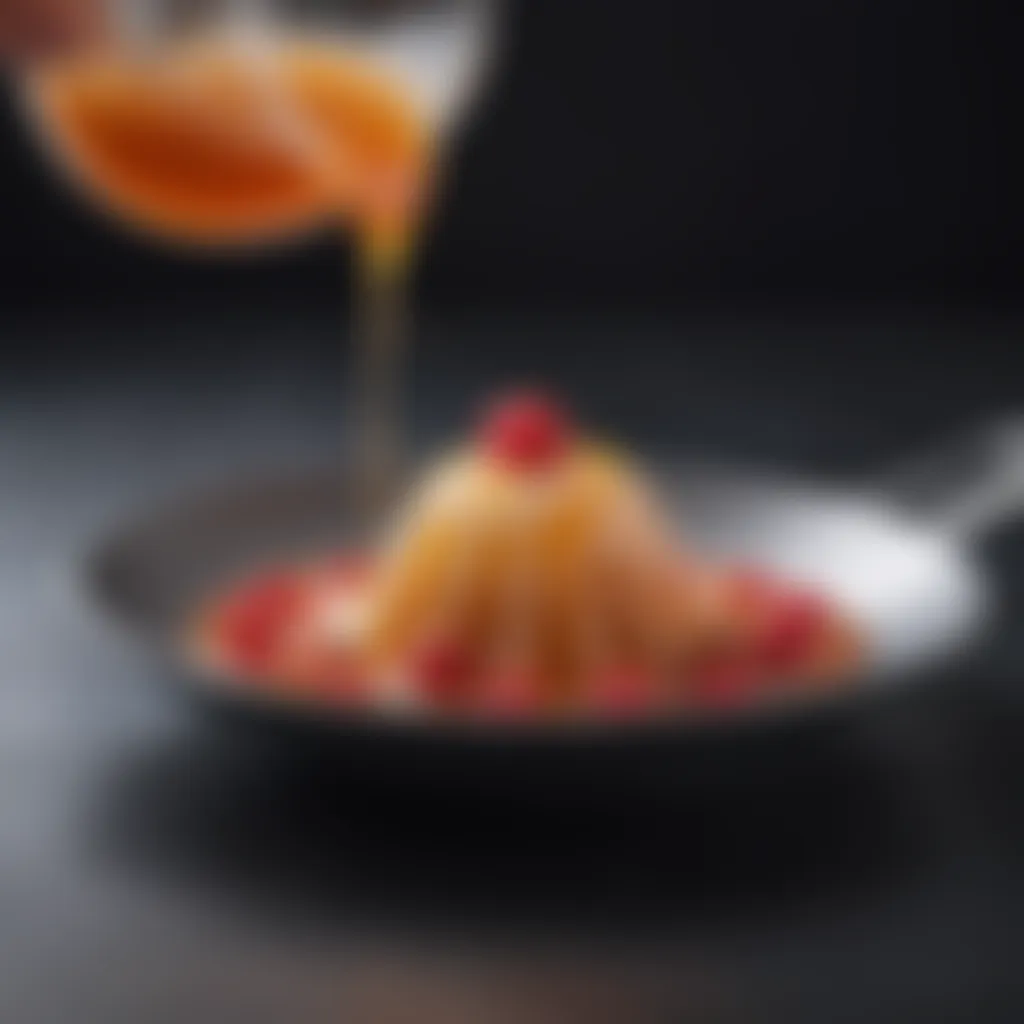
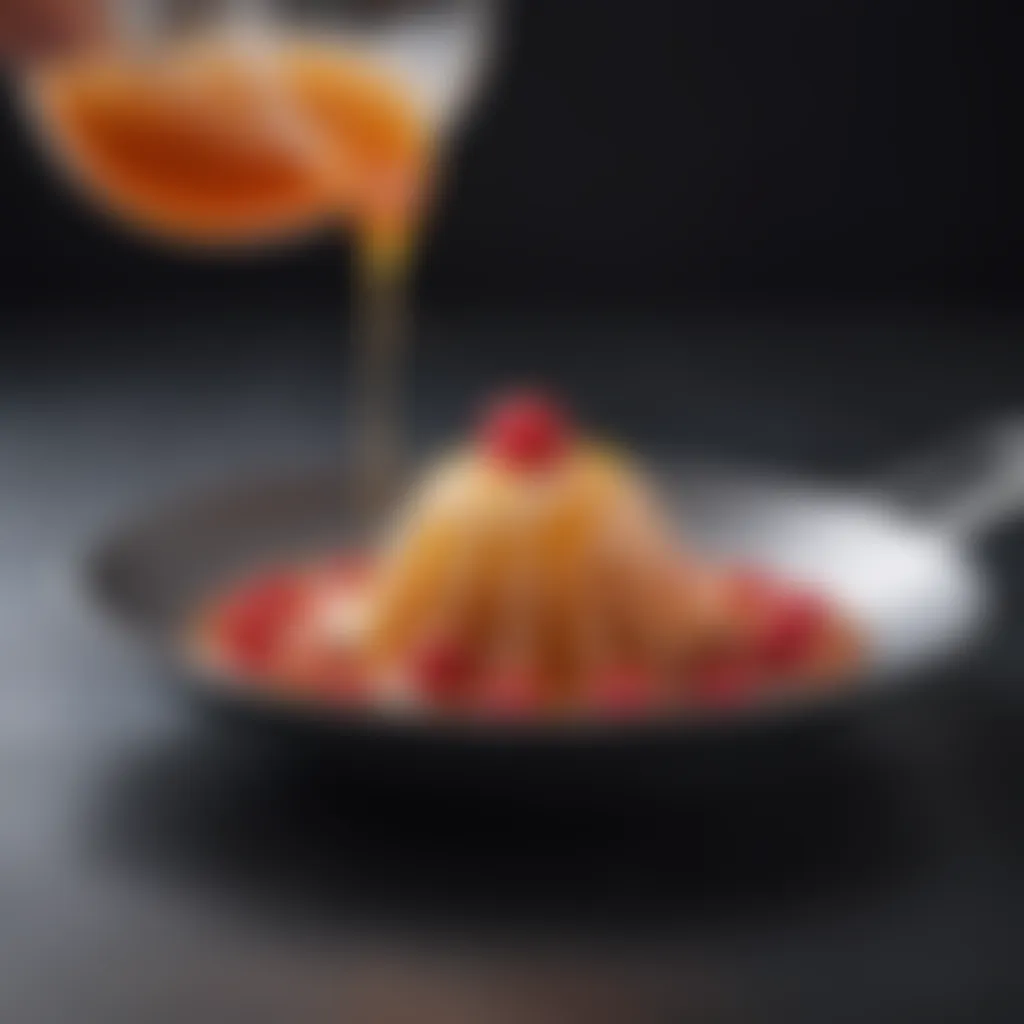
Cooking is not merely an art; it's a scientific endeavor as well. This section digs deep into how understanding the science behind cooking enhances cooking techniques and outcomes. When cooks grasp the fundamentals, they can control flavor outcomes, create better textures, and ultimately enjoy cooking even more. It also fosters an appreciation for the intricate processes that take place in the kitchen, transforming raw ingredients into delightful dishes.
As the saying goes, "A watched pot never boils." However, there's a lot more happening in that pot than you might realize. By grasping the underlying principles of cooking science, you can elevate your culinary exploits from ordinary to extraordinary.
Understanding Flavor Development
Flavor development is the cornerstone of good cooking. It's what differentiates a bland dish from a mouthwatering experience. Several factors contribute to flavor development: the selection of ingredients, the cooking method, and the timing. When ingredients are cooked, their natural flavors evolve; they meld, layer, and sometimes even intensify.
Flavor compounds are volatile, and how they interact can create a symphony of tastes. For example, a simple sauté of garlic and onion can significantly differ in flavor profile based on the temperature and timing. If garlic is added too early, it may burn, leading to bitterness instead of the sweetness you’re after.
Additionally, the Maillard reaction and caramelization play pivotal roles in flavor enhancement—two processes worth exploring further.
Chemical Reactions in Cooking
Chemical reactions are at the heart of cooking. They dictate not just how food cooks but how it tastes and feels. Two reactions, in particular, stand out in their importance: the Maillard reaction and caramelization. Both create complex flavors, and understanding them can enhance your cooking dramatically.
The Maillard Reaction
The Maillard reaction is a complex series of responses that occurs when proteins and sugars react under heat. This reaction is responsible for the golden-brown crust you see on grilled meats and baked goods. It contributes significantly to flavor and color development, resulting in unique taste profiles that cannot be achieved through boiling or steaming alone.
One key characteristic of the Maillard reaction is that it happens at higher temperatures compared to other cooking methods. This gives the food an appealing color and depth of flavor, making it a popular choice among chefs and home cooks alike. However, a downside is that if not monitored, it can lead to overcooked or burnt food, diminishing the dish altogether.
Ultimately, the Maillard reaction adds complexity, inviting the eater to enjoy every bite. In the realm of this article, it serves as an emblem of how simple ingredients can undergo profound transformation through the magic of heat chemistry.
Caramelization
Caramelization, often conflated with the Maillard reaction, entails the oxidation of sugar, creating a rich and sweet flavor profile. It happens when sugar is heated above its melting point, turning it golden and eventually brown. It’s the go-to for achieving that luscious flavor in desserts like crème brûlée or even savory dishes, such as caramelized onions.
A notable feature of caramelization is its simplicity. Unlike the Maillard reaction, which requires specific conditions and diverse ingredients, caramelization primarily focuses on sugars. The sweetness that emerges is unparalleled, providing a comforting essence in both sweet and savory dishes.
However, much like the Maillard reaction, it requires careful attention. If left unattended too long, sugars can caramelize to the point of burning, resulting in bitter flavors that can ruin your dish. Thus, employing caramelization wisely can elevate flavors while also requiring care and precision.
"Success in the kitchen is often about understanding the science behind the flavors and techniques!"
Ending
Understanding the science behind cooking is integral to mastering culinary arts. From knowing the balance of flavors to recognizing the role of heat and reactions, it's clear that science and cooking are intricately intertwined. So, as you venture into the culinary world, remember to appreciate the roles of these chemical reactions in creating delightful dishes.
Case Studies of Remarkable Culinary Techniques
Culinary techniques do not exist in a vacuum; rather, they evolve through shared knowledge and exploration across generations and cultures. The case studies of remarkable culinary techniques illuminate both the art and science behind cooking practices. They help both budding chefs and experienced cooks to understand and appreciate the transformation of simple ingredients into exquisite dishes. Additionally, these studies offer an opportunity to observe the relationship between method, flavor development, and plate presentation.
Molecular Gastronomy
Molecular gastronomy is often viewed as the avant-garde of the culinary world. It marries science with cooking, employing tools and techniques commonly associated with laboratories. This form of cuisine plays with texture, temperature, and taste in ways that ordinary cooking often does not.
Imagine working with spherification, where liquids are transformed into spheres that burst in the mouth, creating a delightful explosion of flavors. For instance, the use of calcium chloride to create caviar-like beads from fruit juices, or soy sauce pearls serves as a perfect illustration of this technique.
Another popular method within molecular gastronomy is the use of foams and airs. By employing a siphon, chefs can turn sauces into light, airy textures, offering a new take on classic flavors. This often leads to surprising contrasts on the palate, which can elevate a dining experience.
Benefits of Molecular Gastronomy:
- Innovation in Flavors: Creating unexpected flavor combinations that intrigue the palate.
- Visual Appeal: Adding a modern twist to presentation, making meals look like pieces of art on the plate.
- Cooking Precision: Using scientific methods can result in more consistent cooking results, enhancing dishes' reliability.
Traditional Cooking Techniques in Modern Cuisine
While molecular gastronomy pushes the envelope, traditional cooking techniques still hold their ground in the culinary world. These methods, passed down through generations, remain essential in understanding the essence of flavor and cooking fundamentals.
For instance, techniques like roasting, braising, and poaching may seem straightforward, but they are the backbone of many contemporary dishes. There’s a certain respect for the craft that does not go unnoticed; when a recipe calls for a slow-cooked beef stew, it is the traditional passing down of the braising method that ensures the rich flavors develop fully over time.
Considerations When Blending Techniques:
- Flavor Profile: Integrating traditional methods often ensures the base flavors are rich and well-developed.
- Cultural Significance: Understanding the history behind these techniques can deepen one's appreciation for the dishes themselves.
- Balancing Act: Combining traditional and modern techniques allows cooks to create menu items that appeal to a broader audience while respecting culinary heritage.
By studying both molecular gastronomy and traditional techniques, culinaries can develop a more holistic approach to cooking. This allows for creativity while remaining grounded in principles that have stood the test of time.
"Every bite of food has a narrative; it is the chef's job to tell that story beautifully through the right combination of technique and flavor."
Ending
The world of culinary techniques is as vast as a great ocean, with waves of innovation continually reshaping our understanding of cooking. By acknowledging the importance of various methods, we not only enhance our cooking skills but also deepen our appreciation for the artistry involved in preparing food.
The Continuous Evolution of Culinary Arts
The culinary arts never stand still. What was once considered cutting-edge—like sous vide or molecular gastronomy—becomes the foundation for new explorations in taste and presentation. Techniques earn their place in modern kitchens because they adapt to current trends, technological advances, and changing palates.
This continuous evolution allows us to rediscover traditional recipes through a modern lens—taking a classic braised dish and infusing it with new spices or presenting it with contemporary plating styles. Such changes push us to think outside the box, inviting bold flavors and innovative styles while maintaining respect for culinary history. It’s this dynamic nature that charms many cooks and food lovers alike, creating conversations about food not only as sustenance but as an art form.
Encouragement for Culinary Exploration
Every stark kitchen can turn into a haven of creativity. There’s a lesson in each slice, sauté, and simmer. For the curious cook, exploring various culinary techniques can be life-changing, fostering a sense of accomplishment and joy.
- Start with the Basics: Mastering fundamental techniques brings confidence. Boiling pasta, sautéing vegetables, or simply learning the right way to chop an onion can open doors to more complicated dishes.
- Experiment with Flavor Profiles: Mixing and matching spices from different cuisines can lead to delightful discoveries. What if you added paprika to your stir-fried rice?
- Learn from Others: Attend cooking classes or watch tutorials from seasoned chefs. Online platforms like reddit.com often host discussions among cooking enthusiasts sharing tips and personal experiences.
Ultimately, culinary exploration nourishes not only the body but the spirit. It encourages creativity and innovation and connects us to cultures around the globe. So gather your knives, zest your lemons, and step into the kitchen with a heart full of curiosity. The journey of taste awaits!







